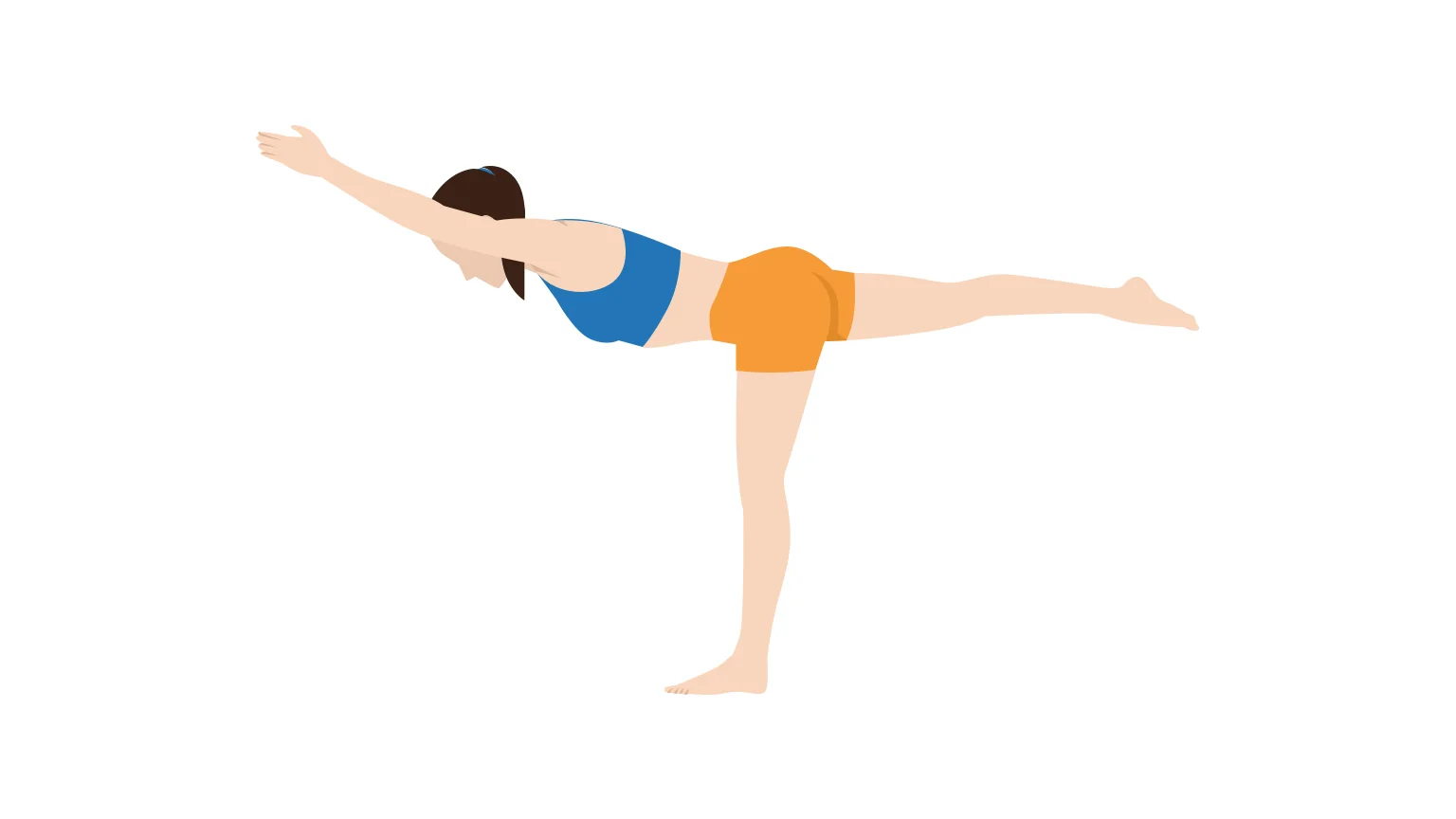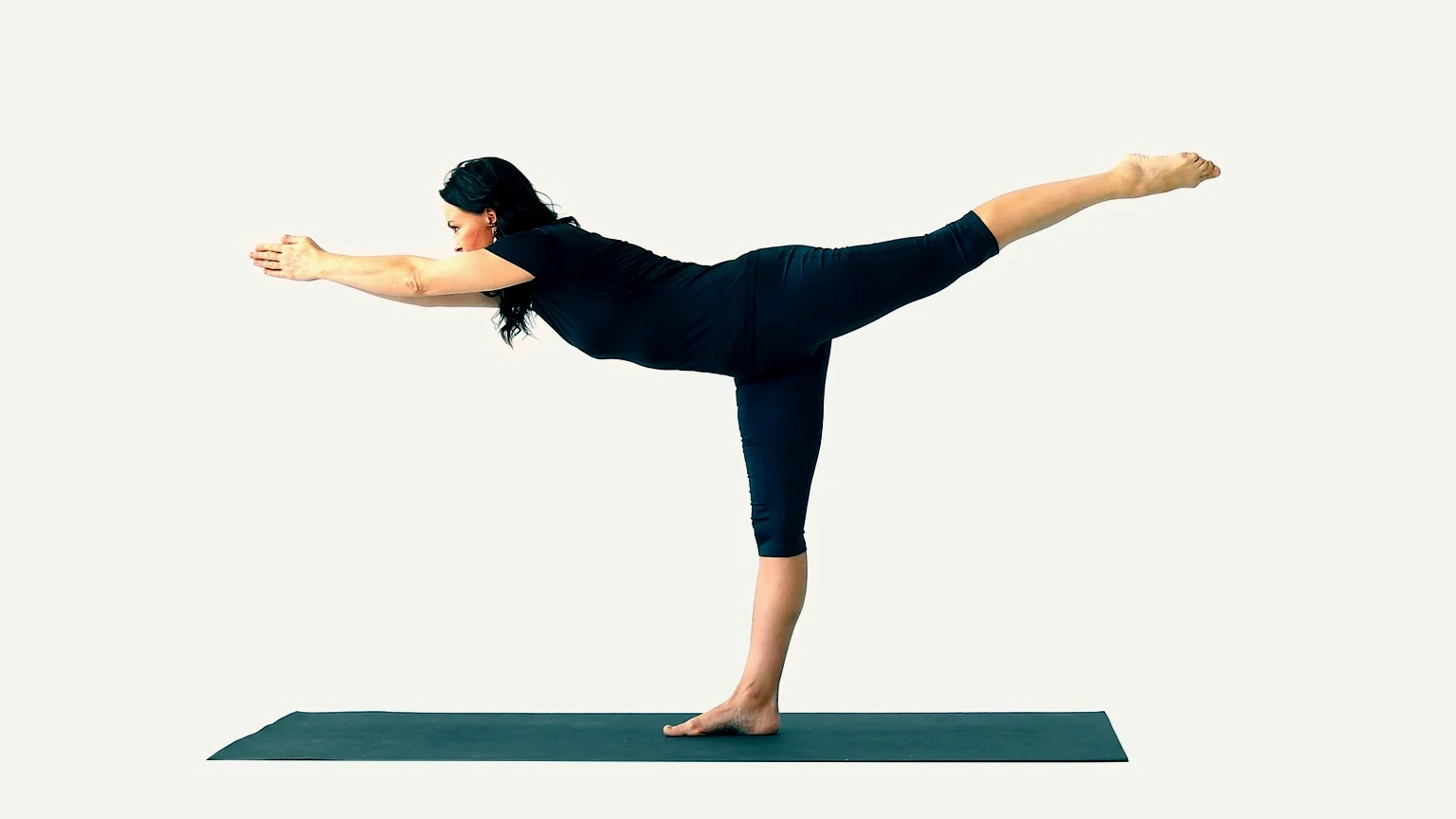Warrior 3 Pose (Warrior III, Virabhadrasana III)

The Warrior 3 Pose, also known as Warrior III or Virabhadrasana III, is a standing yoga pose. In this pose, you stand on one leg with your other leg extended back, parallel to the floor. Your torso is bent forwards to maintain a straight line from your head to your heel.
- Position: Standing.
- Stretched body parts: The Warrior 3 pose stretches your thighs, hamstrings, shoulders and spine. It also engages your core muscles to keep your body balanced during the pose.
- Benefits: In addition to stretching multiple areas of your body, the Warrior 3 pose can improve your overall balance and posture. It is said this pose, and many other yoga poses, can reduce anxiety and stress.
- Symbolism: The Warrior 3 pose imitates the pose of a warrior launching into battle. It represents strength, courage and determination.
- Similar poses: Warrior I (Virabhadrasana I), Warrior II (Virabhadrasana II), Half Moon Pose (Ardha Chandrasana), Dancer’s Pose (Natarajasana).
Meaning of Virabhadrasana III
The name Virabhadrasana III comes from Sanskrit. It is made up of the following words:
- “Vira” means “hero” or “warrior”;
- “Bhadra” means “friend”; and
- “Asana” means “pose”.
If we put the first two words together, we get Virabhadra. Virabhadra is a fierce incarnation of the Hindu god Shiva. It is said that Shiva created Virabhadra from a clump of his hair, pulled in rage and grief following the self-immolation (the act of setting fire to oneself as a sacrifice) of his wife Sati. Virabhadra was a warrior who was also compassionate and righteous, embodying the qualities of a true hero.
There are three variations of Virabhadrasana. In this third variation, the Virabhadrasana III (Warrior 3 Pose) reflects the warrior’s readiness, stability and concentration before engaging in battle. It also signifies the inner strength, patience, and tranquility needed to face life’s challenges.
How to do the Warrior 3 Pose

- Start in the Mountain Pose (Tadasana).
- Step your feet hip-width apart and place your hands on your hips.
- Lift your left foot off the ground, shifting your weight onto your right foot.
- Hinge forward from your hips, extending your left leg straight behind you until it is parallel with the ground.
- Engage your abdominal muscles to maintain balance.
- Optional: Extend your arms out in front of you, with your palms facing each other.
- Hold for 5-10 breaths, then gently release the pose by lowering your leg and standing back up in the Mountain Pose.
- Repeat for your other leg.
Variations
- For extra support: You can use a wall for additional support. Stand next to a wall wall, and when you hinge forward into the pose, allow your raised foot to touch the wall.
- Easier variation: Keep your hands at your hips instead of extending them in front of you.
- Close your eyes: For an additional challenging, you could perform the Warrior 3 pose while keeping your eyes closed. It is more difficult to keep your body balanced with your eyes closed, so this can help improve your sense of balance.
- Warrior 3 with eagle arms pose: Take the Warrior 3 pose, then twist one arm over the other at your elbows and wrists. Press your palms together. This variation helps to open up your shoulders and upper back.
- Warrior 3 with bound hands pose: Take the Warrior 3 pose, then interlace your fingers behind your back. This opens up your chest and shoulders. It also demands more balance skill than the traditional Warrior 3.
Tips
- Keep your gaze on one point on the floor about a meter in front of your mat to help maintain balance.
Prep poses
- Downward-Facing Dog (Adho Mukha Svanasana) – In the Downward Facing Dog pose, your body forms an inverted “V” shape with your hands and feet on the ground, so it requires less balance than the Warrior 3 pose. It provides more of a full body stretch, working your core, shoulders and legs.
- Warrior I pose (Virabhadrasana I) – Warrior I helps you build balance and strength in your legs, which is needed for Warrior 3.
- Warrior II pose (Virabhadrasana II) – Both Warrior 2 and Warrior 3 are standing poses. This pose is used a prep pose because it opens up your hips, stretches your leg muscles and demands some balance skill.
- Wide-Legged Forward Bend (Prasarita Padottanasana) – This pose opens up your hips and stretches your hamstrings. It is less advanced than the Warrior 3 pose, requiring less strength and balance.
